[EN/SI] ‘Black Market’ by Andrej Škufca at MGLC International Centre of Graphic Arts
![[EN/SI] ‘Black Market’ by Andrej Škufca at MGLC International Centre of Graphic Arts](http://blokmagazine.com/wp-content/uploads/2020/06/mglc-andrej-skufca-black-market-2800-web-1200x899.jpg)
[EN]
text: Àngels Miralda
“When the object of design is not an object form or a master plan, but a set of instructions for an interplay between variables, design acquires some of the power and currency of software. This spatial software is not a thing but a means to craft a multitude of interdependent relationships and sequences – an updating platform for inflecting a stream of objects.”
Keller Easterling
The spiralling arms of Black Market parallel self-assembling parts that aim towards total automation. Their algorithmic evenness derives from the high-end design platforms used for contemporary production and their material manifestation. They are the virtual visions and renderings that design our environment. The gleaming black tubes recall their tellurian origins, oil pipelines, oceanic fibre optics cables, conger eels, exoskeletons, and the earliest forms of tubular multi-celled micro-organisms. These objects flatten time into a future-primitive that denies human exceptionalism.
The Black Market is a trade ground outside of legal frameworks. The most well-known online example, Silk Road, moves physical objects across earth through its tentacular web of virtual communications and exchange networks. It is anarchist in principle– molecular, and rhizomatic – it can scatter and convene in infinite formations, passing constantly between the ephemeral and the physical. It is what Keller Easterling calls an active form, an organ without a body that exists in our society almost as an invisible parallel world – its modular, organic, and biotechnical corpus shows the ghost behind institutions and political ethics.
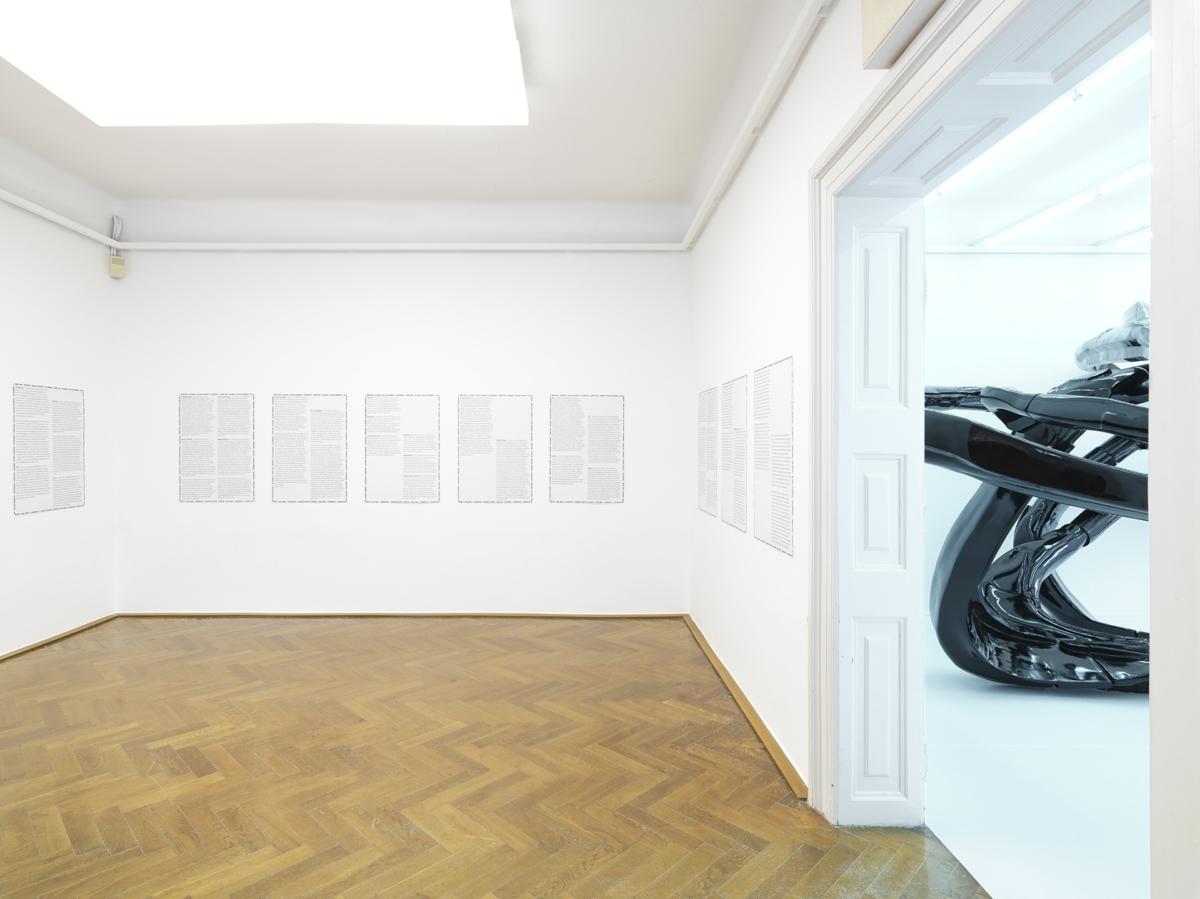
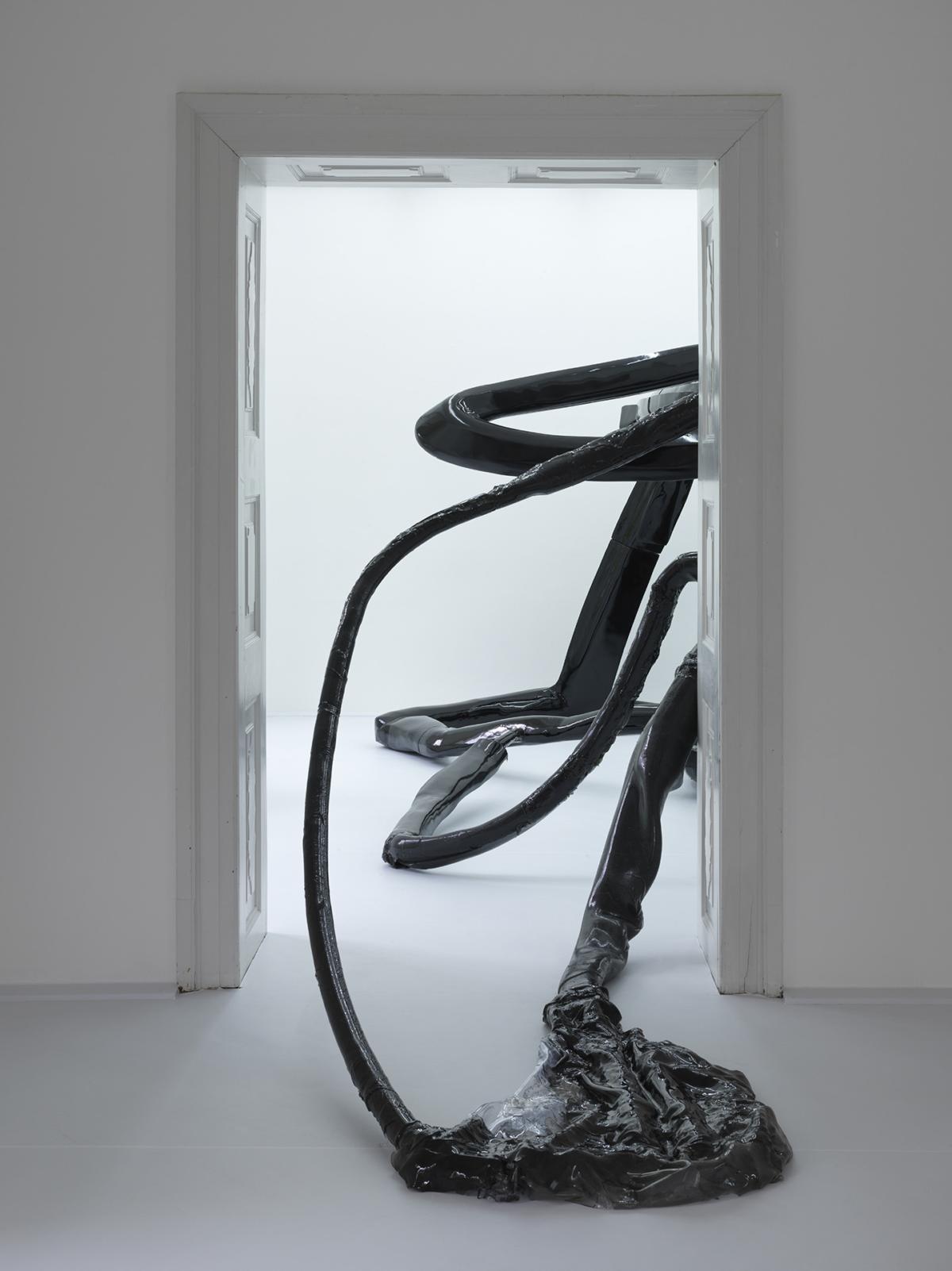
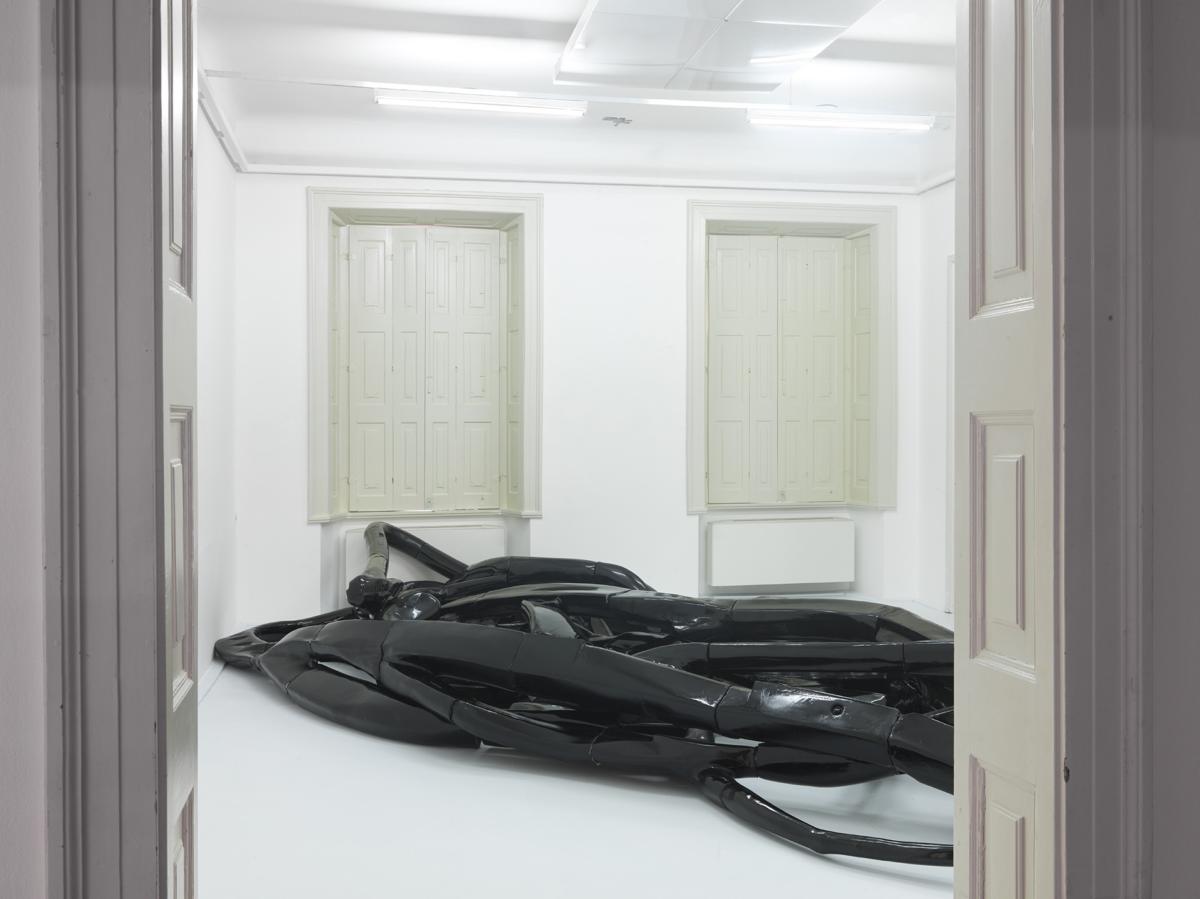
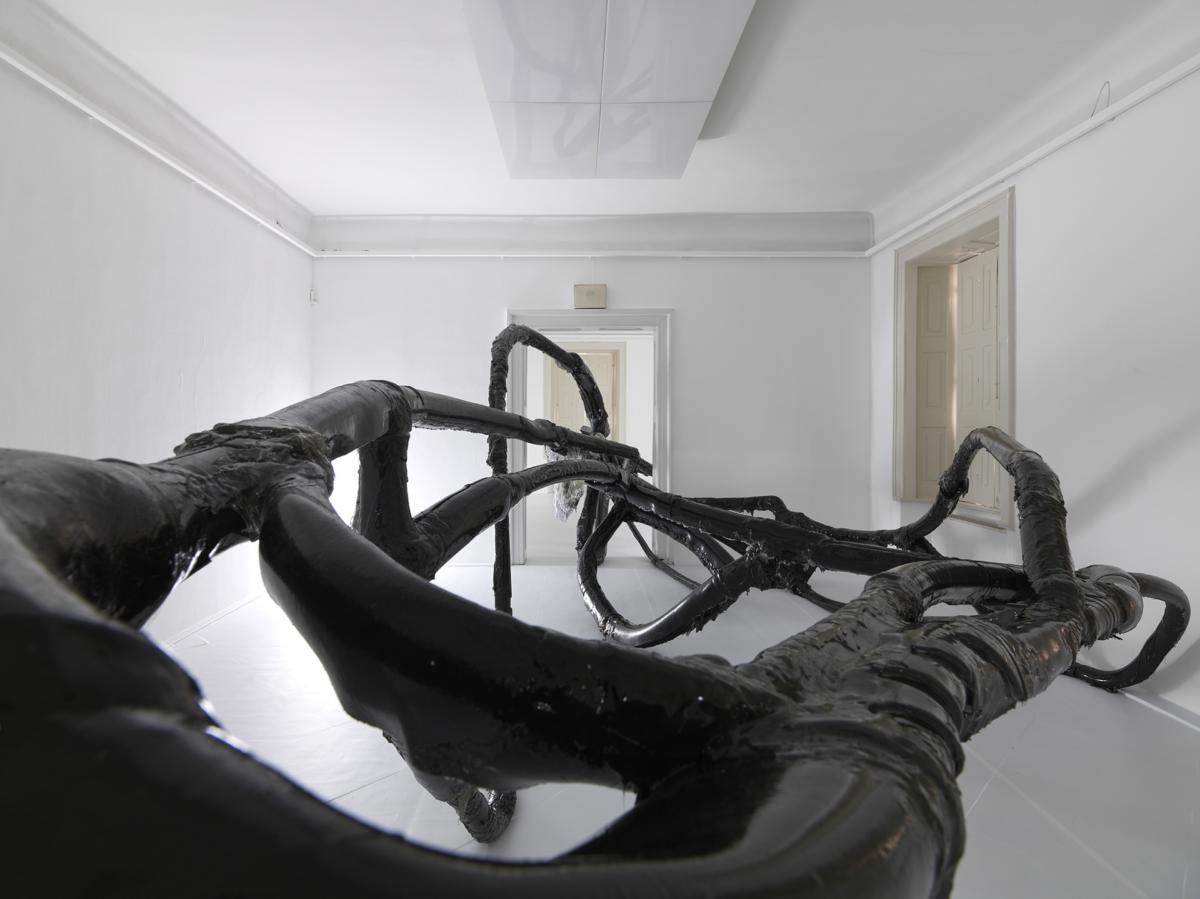
Based on tenets of science-fiction such as J.G. Ballard or Stanislaw Lem, imagining the future is always a way to critique our own times. Today, the untapped potential of creating automated societies of radical equality exists, but the current corporatist structure aims to finish extracting as much material and human energy in a rampant anti-technological model focused more on increasing consumption than on a great leap forward. Using scientific visions of biotech, architecture, and urban engineering – Black Market is a proposal for potential futures that embrace technology’s emancipatory potential and a rethinking of humanity’s role and position within planetary entanglement.
Andrej Škufca’s solo exhibition at the MGLC presents a selection of modular iterations of his most recent series. This exist as part of an ever-expanding whole that can separate, come together, and re-form. Presented in singular parts in the U3 biennial and at Futura’s Karlin Studios in Prague, and the Galerija Miroslav Kraljevic in Zagreb- they come together for the first time in relation to the activities of ŠUM magazine where Škufca has served as editor since 2016. Presented at the Slovenian pavilion of the Venice biennale, the magazine has consistently brought together visual arts with breaking-edge technology and theory, compiling verbal and visual modus operandi. Presented together, theory and sculpture combine into a praxis for the terrifying, but open-ended future.
[SI]
tekst: Àngels Miralda
Kadar predmet oblikovanja ni predmetna oblika ali krovni načrt, ampak niz navodil za součinkovanje spremenljivk, pridobi oblikovanje nekaj moči in veljave programske opreme. Ta prostorska programska oprema ni stvar, temveč sredstvo za oblikovanje množice medsebojno odvisnih odnosov in zaporedij – posodabljajoča platforma za pregibanje toka predmetov.
Keller Easterling
Spiralaste roke Črnega trga spominjajo na samosestavljive dele, katerih cilj je popolna avtomatizacija. Njihova algoritmična enakomernost izhaja iz vrhunskih oblikovalskih platform, ki se uporabljajo za sodobno proizvodnjo in njihovo snovno manifestiranje. Pravzaprav so to virtualne vizije in interpretacije, ki oblikujejo naše okolje. Bleščeče črne cevi ponazarjajo svoj zemeljski izvor, naftovode, oceanske kable iz optičnih vlaken, morske jegulje, eksoskelete in najzgodnejše oblike cevastih večceličnih mikroorganizmov. Ti predmeti sploščajo čas v prvobitnost prihodnosti, ki zanika človekovo izjemnost.
Črni trg je prostor trgovanja zunaj pravnih okvirov. Najbolj znan spletni primer, Svilna pot, premika fizične predmete po zemlji prek svoje lovkaste mreže virtualne komunikacije in izmenjevalnih omrežij. Načeloma je anarhistična – molekularna in rizomatična. Lahko se razprši in združi v neskončne tvorbe, pri čemer se nenehno pomika med minljivim in fizičnim. Po svoji biti je to, kar Keller Easterling imenuje aktivna oblika, organ brez telesa, ki v naši družbi obstaja kot skoraj neviden vzporeden svet, njegov modularni, organski in biotehnični korpus pa razkriva duha za institucijami in politično etiko.
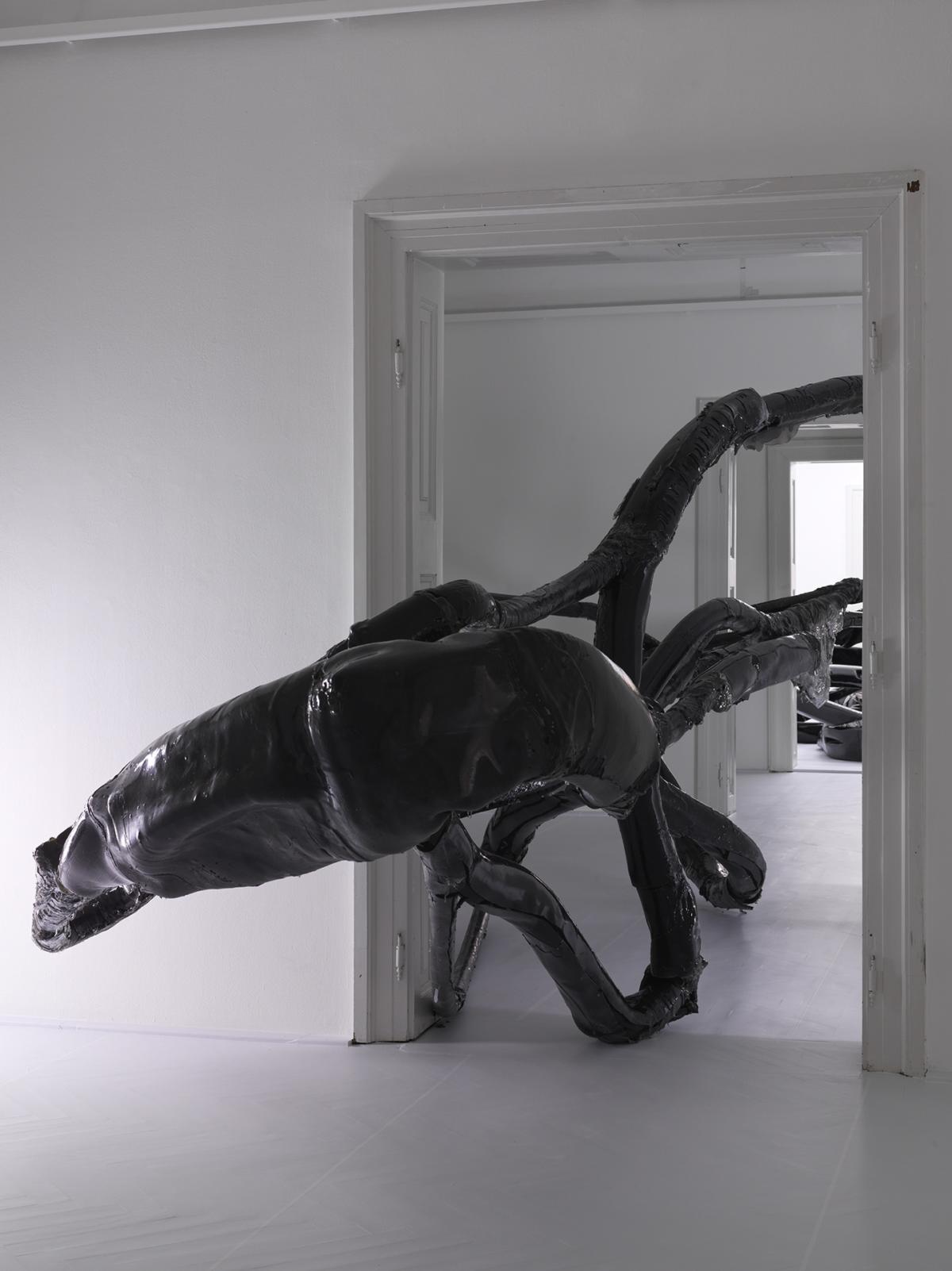
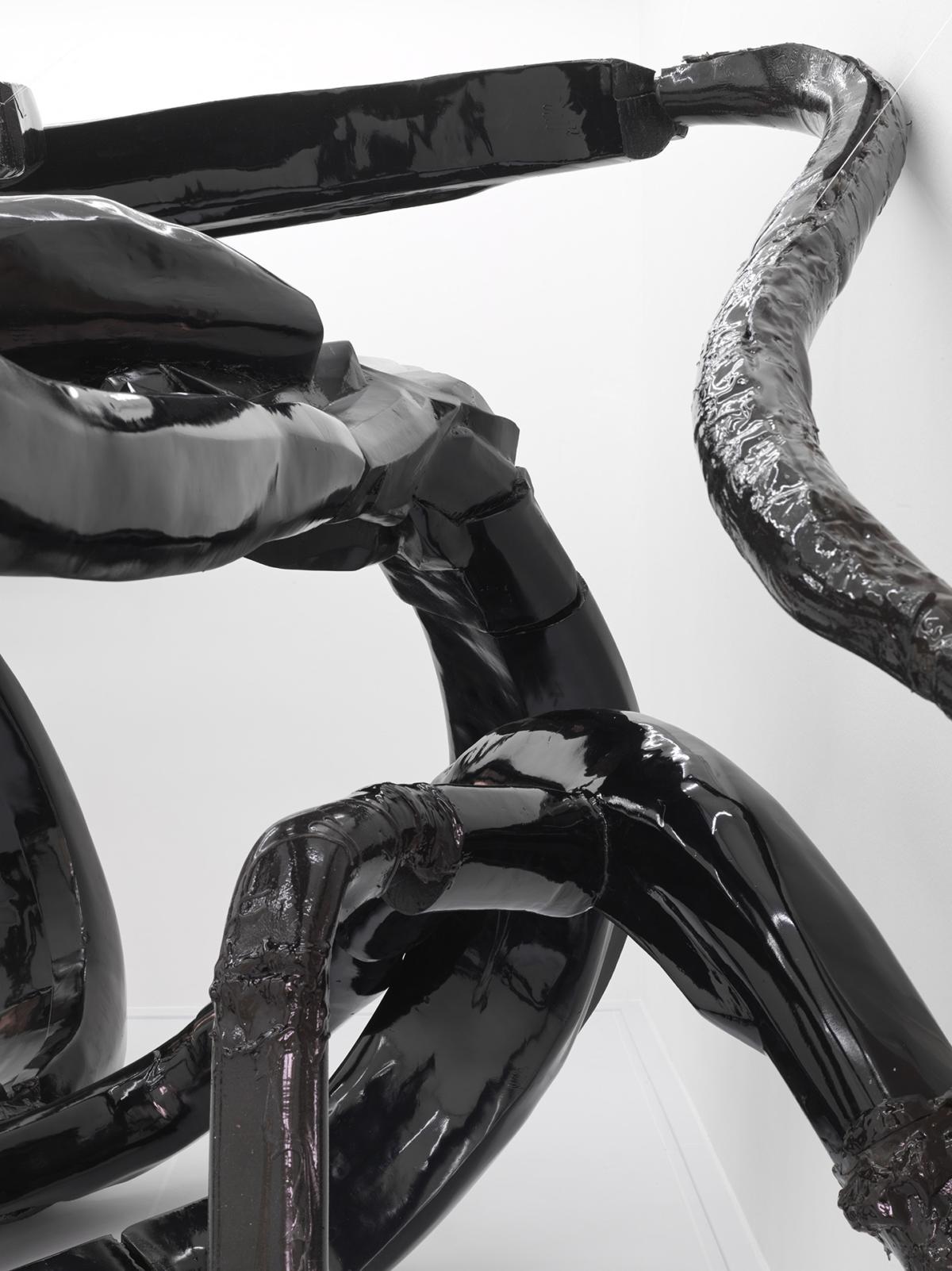
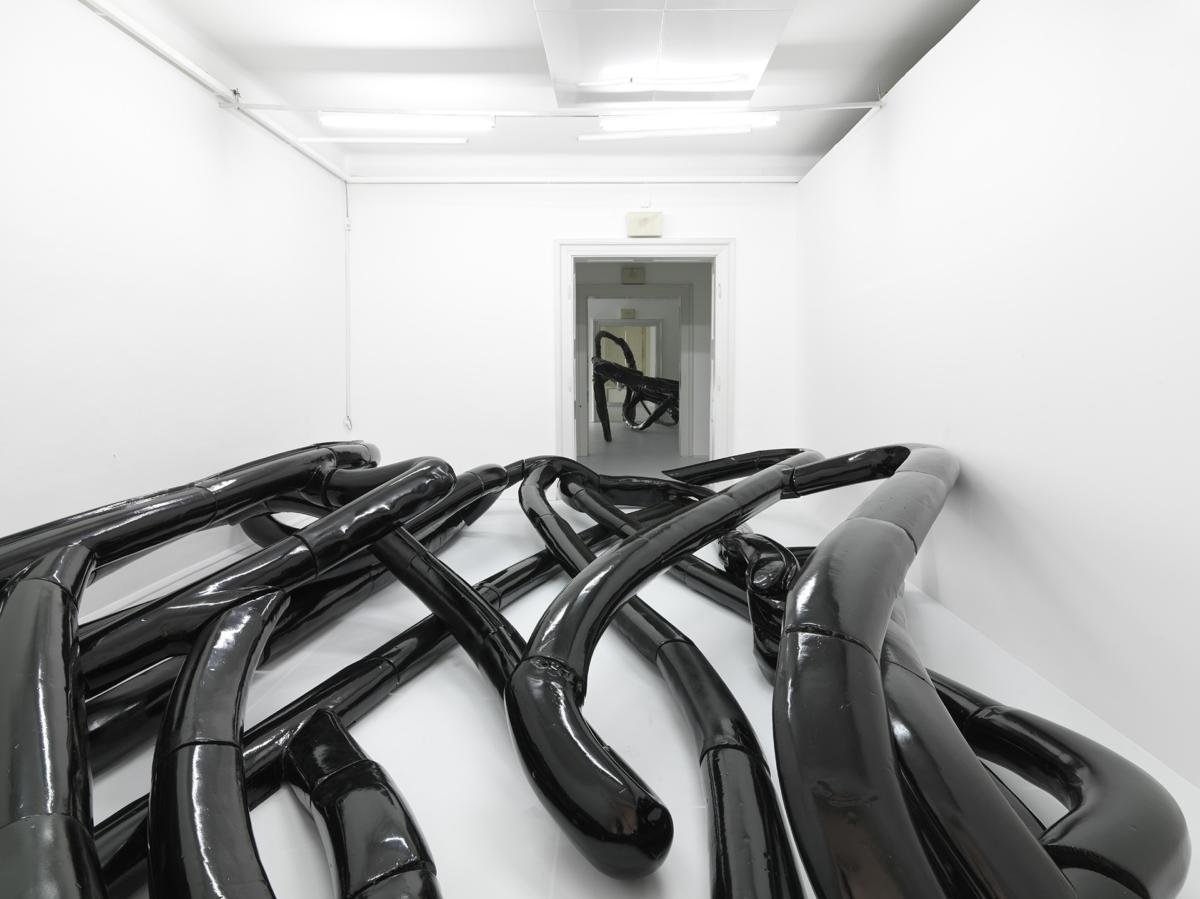
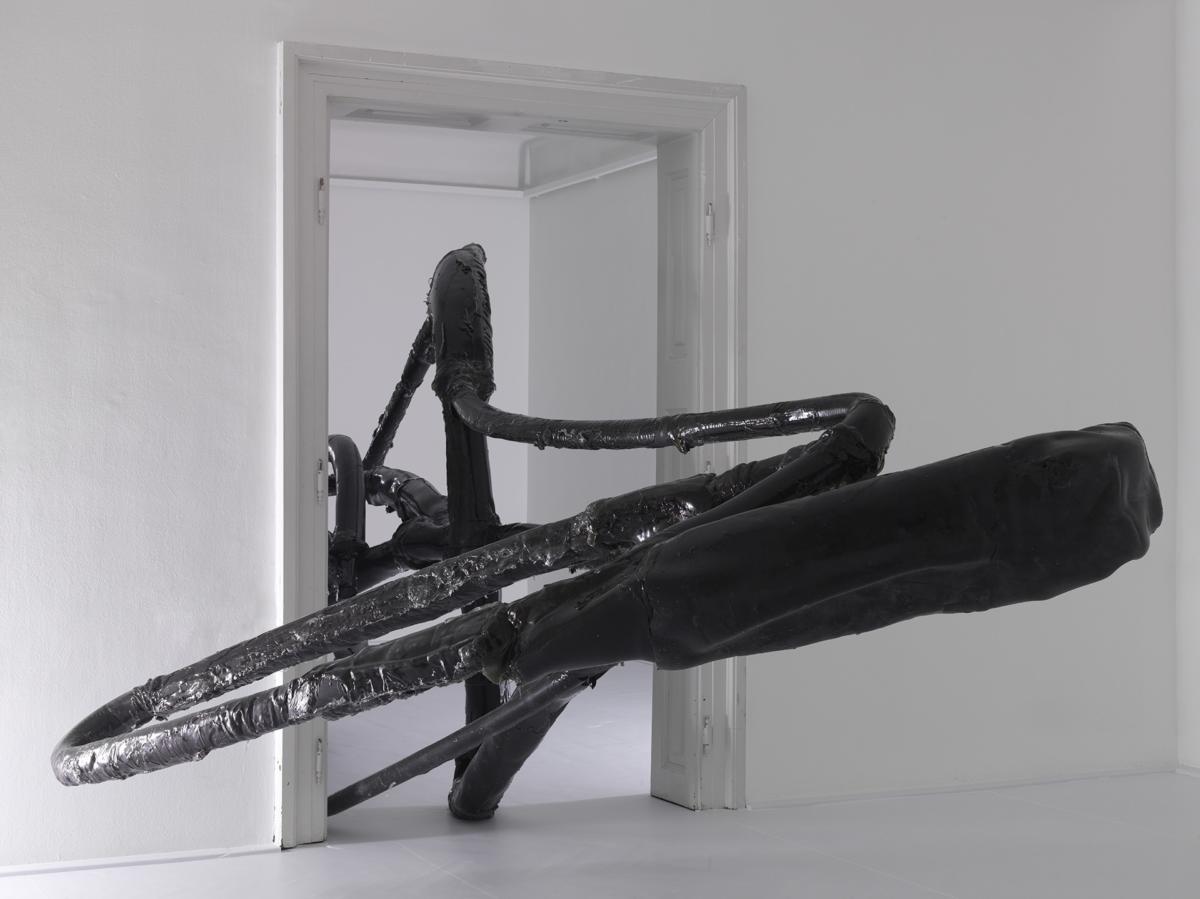
Po mnenju avtorjev znanstvene fantastike, kot sta J. G. Ballard ali Stanisław Lem, je zamišljanje prihodnosti vedno način kritiziranja našega lastnega časa. Dandanes neizkoriščen potencial ustvarjanja avtomatiziranih družb radikalne enakosti sicer obstaja, vendar je cilj sedanje korporativne strukture dokončati izčrpavanje čim večje količine materialne in človeške energije na podlagi podivjanega antitehnološkega modela, ki se bolj kot na véliki skok naprej osredotoča na povečevanje potrošnje. Ob uporabi znanstvenih vizij biotehnologije, arhitekture in urbanizma je Črni trg predlog morebitnih prihodnosti, ki zajemajo emancipacijski potencial tehnologije ter ponovni razmislek o vlogi in položaju človeštva v planetarni prepletenosti.
Samostojna razstava Andreja Škufce v Mednarodnem grafičnem likovnem centru prinaša izbor modularnih iteracij iz njegove najnovejše serije. Obstajajo kot del stalno naraščajoče celote, ki se lahko ločuje, združuje ali preoblikuje. Medtem ko so bile na 9. trienalu sodobne umetnosti U3 v Ljubljani, v Futurinih ateljejih Karlín v Pragi in v Galeriji Miroslava Kraljevića v Zagrebu predstavljene po delih, so na tokratni razstavi prvič združene in predstavljene tudi v zbirki teoretskih besedil najrazličnejših publicistov in teoretikov, zbranih pri reviji ŠUM. Revija in platforma za sodobno umetnost in kritično teorijo ŠUM, katere urednik je Andrej Škufca, je bila predstavljena v slovenskem paviljonu na beneškem bienalu in dosledno združuje vizualno umetnost s prelomno tehnologijo in teorijo ter besedni in vizualni način delovanja. Teorija in skulptura, predstavljena skupaj, se združita v prakso za zastrašujočo, a odprto prihodnost.
Imprint
| Artist | Andrej Škufca |
| Exhibition | Black Market |
| Place / venue | MGLC International Centre of Graphic Arts, Ljubljana |
| Dates | 19 May – 16 August 2020 |
| Curated by | Àngels Miralda |
| Website | www.mglc-lj.si/eng/ |
| Index | Andrej Škufca Àngels Miralda MGLC International Centre of Graphic Arts |
